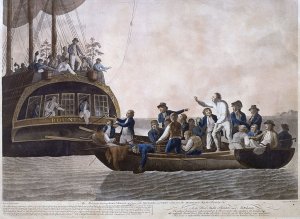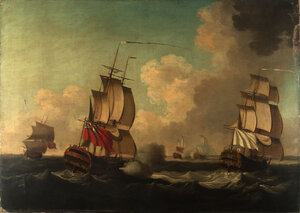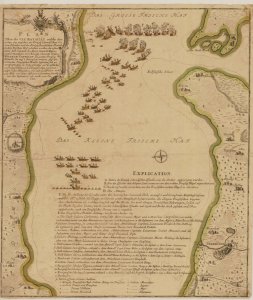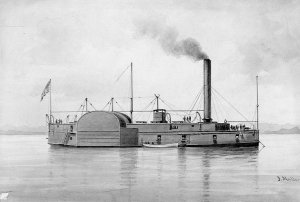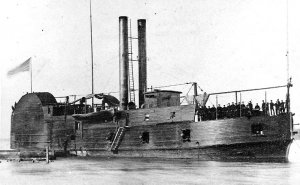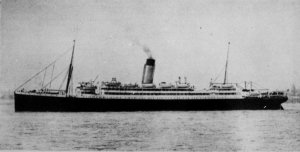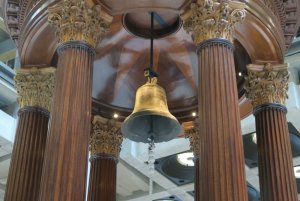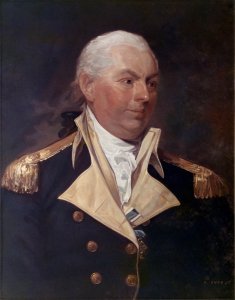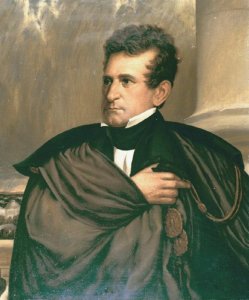Today in Naval History - Naval / Maritime Events in History
6th of September
please use the following link and you will find the details and all events of this day ..... in the following you will find some of the events
1781 - HMS Savage (1778 - 14), Charles Stirling, taken by American privateer Congress (1781 - 24), Cptn. Gedded, off Charleston
The Capture of HMS Savage was a naval battle of the Revolutionary War involving the American privateer Congress and the British unrated sloop-of-war HMS Savage. It occurred in September 1781 off South Carolina and is considered one of the hardest-fought single ship actions of the war.

1800 - Loss of HMS Stag (1794 - 32)
HMS Stag (1794 - 32), Cptn. Robert Winthrop, parted her cables in Vigo bay and was laid her on her beam ends by strong winds. She made sail, but hurricane force winds drove her on shore at Point Subudo where she was holed on a rock. After some of her stores had been salvaged the Rear Admiral ordered her to be burnt.
Milbrook (16), Schooner was reported to have saved a great many of the crew of the Stag.
HMS Stag (1794) was a 32-gun fifth rate launched in 1794 and wrecked in 1800 at Vigo Bay.

1807 – Launch of French Ville de Berlin, a 74-gun Téméraire class Ship of the Line at Antwerp
Ordered on 24 April 1804 as Thésée, Ville de Berlin was one of the ships built in the various shipyards captured by the First French Empire in Holland and Italy in a crash programme to replenish the ranks of the French Navy. She took her definitive name on 2 July 1807.
She was commissioned on 21 September June 1807 and became a part of the Escaut squadron under Vice-Admiral Missiessy. In 1814, she took part in the defence of Antwerp.
At the Bourbon Restoration, she was renamed Atlas and sailed to Brest. Renamed Ville de Berlin during the Hundred Days, she took her name of Atlas back after Napoléon's second abdication.
Struck from the Navy lists on 23 February 1819, she became a storage hulk in Brest.

1808 - HMS Recruit (1806 - 18), Chas. Napier, engaged French sloop Diligente (1801 - 18) off Antigua.
HMS Recruit was employed in patrolling near the French-held island of Martinique. At 6am on 6th September 1808, she sighted the French brig-corvette Diligente of 18 guns. The Diligente was the sole survivor of a group of three brig-corvettes which had left Lorient with cargoes of flour for the French garrison on Martinique. The group, also comprised of the 16 gun vessels Espiegle and Sylphe had run into the British 18 gun ship-sloop HMS Comet on the 11th August and had been involved in an action in which HMS Comet had taken the Sylphe.

1810 – Launch of French Rivoli, a 74 gun temeraire class ship of the line
The Rivoli was a Téméraire class ship of the line of the French Navy.
Rivoli was built in Venice, whose harbour was too shallow for a 74-gun to exit. To allow her to depart, she was fitted with seacamels.

1814 - Beginning of Battle of Plattsburgh (6 – 11 September 1814)
The Battle of Plattsburgh, also known as the Battle of Lake Champlain, ended the final invasion of the northern states of the United States during the War of 1812. A British army under Lieutenant General Sir George Prévost and a naval squadron under Captain George Downie converged on the lakeside town of Plattsburgh, which was defended by New York and Vermont militia and detachments of regular troops of the United States Army, all under the command of Brigadier General Alexander Macomb, and ships commanded by Master Commandant Thomas Macdonough.
Downie's squadron attacked shortly after dawn on 11 September 1814, but was defeated after a hard fight in which Downie was killed. Prévost then abandoned the attack by land against Macomb's defences and retreated to Canada, stating that even if Plattsburgh was captured, any British troops there could not be supplied without control of the lake.

1842 – Launch of HMS Superb, a 80 gun Vanguard-class Ship of the Line
HMS Superb was a two-deck 80-gun second rate ship of the line of the Royal Navy, launched on 6 September 1842 at Pembroke Dockyard.

1870 - HMS Captain capsized with the loss of nearly 500 lives because of design and construction errors that led to inadequate stability.
HMS Captain was an unsuccessful warship built for the Royal Navy due to public pressure. She was a masted turret ship, designed and built by a private contractor against the wishes of the Controller's department. The Captain was completed in April 1870 and capsized in September 1870 with the loss of nearly 500 lives because of design and construction errors that led to inadequate stability.

6th of September
please use the following link and you will find the details and all events of this day ..... in the following you will find some of the events
Naval/Maritime History - 27th of August - Today in Naval History - Naval / Maritime Events in History
Today in Naval History - Naval / Maritime Events in History 4 September 1782 - Action of 4 September 1782 - HMS Rainbow (44) took French frigate Hebe (40) off the Ile de Bas. The Action of 4 September 1782 was a small naval engagement which was fought off the Île de Batz between a French naval...
shipsofscale.com
1781 - HMS Savage (1778 - 14), Charles Stirling, taken by American privateer Congress (1781 - 24), Cptn. Gedded, off Charleston
The Capture of HMS Savage was a naval battle of the Revolutionary War involving the American privateer Congress and the British unrated sloop-of-war HMS Savage. It occurred in September 1781 off South Carolina and is considered one of the hardest-fought single ship actions of the war.
1800 - Loss of HMS Stag (1794 - 32)
HMS Stag (1794 - 32), Cptn. Robert Winthrop, parted her cables in Vigo bay and was laid her on her beam ends by strong winds. She made sail, but hurricane force winds drove her on shore at Point Subudo where she was holed on a rock. After some of her stores had been salvaged the Rear Admiral ordered her to be burnt.
Milbrook (16), Schooner was reported to have saved a great many of the crew of the Stag.
HMS Stag (1794) was a 32-gun fifth rate launched in 1794 and wrecked in 1800 at Vigo Bay.
1807 – Launch of French Ville de Berlin, a 74-gun Téméraire class Ship of the Line at Antwerp
Ordered on 24 April 1804 as Thésée, Ville de Berlin was one of the ships built in the various shipyards captured by the First French Empire in Holland and Italy in a crash programme to replenish the ranks of the French Navy. She took her definitive name on 2 July 1807.
She was commissioned on 21 September June 1807 and became a part of the Escaut squadron under Vice-Admiral Missiessy. In 1814, she took part in the defence of Antwerp.
At the Bourbon Restoration, she was renamed Atlas and sailed to Brest. Renamed Ville de Berlin during the Hundred Days, she took her name of Atlas back after Napoléon's second abdication.
Struck from the Navy lists on 23 February 1819, she became a storage hulk in Brest.
1808 - HMS Recruit (1806 - 18), Chas. Napier, engaged French sloop Diligente (1801 - 18) off Antigua.
HMS Recruit was employed in patrolling near the French-held island of Martinique. At 6am on 6th September 1808, she sighted the French brig-corvette Diligente of 18 guns. The Diligente was the sole survivor of a group of three brig-corvettes which had left Lorient with cargoes of flour for the French garrison on Martinique. The group, also comprised of the 16 gun vessels Espiegle and Sylphe had run into the British 18 gun ship-sloop HMS Comet on the 11th August and had been involved in an action in which HMS Comet had taken the Sylphe.
1810 – Launch of French Rivoli, a 74 gun temeraire class ship of the line
The Rivoli was a Téméraire class ship of the line of the French Navy.
Rivoli was built in Venice, whose harbour was too shallow for a 74-gun to exit. To allow her to depart, she was fitted with seacamels.
1814 - Beginning of Battle of Plattsburgh (6 – 11 September 1814)
The Battle of Plattsburgh, also known as the Battle of Lake Champlain, ended the final invasion of the northern states of the United States during the War of 1812. A British army under Lieutenant General Sir George Prévost and a naval squadron under Captain George Downie converged on the lakeside town of Plattsburgh, which was defended by New York and Vermont militia and detachments of regular troops of the United States Army, all under the command of Brigadier General Alexander Macomb, and ships commanded by Master Commandant Thomas Macdonough.
Downie's squadron attacked shortly after dawn on 11 September 1814, but was defeated after a hard fight in which Downie was killed. Prévost then abandoned the attack by land against Macomb's defences and retreated to Canada, stating that even if Plattsburgh was captured, any British troops there could not be supplied without control of the lake.
1842 – Launch of HMS Superb, a 80 gun Vanguard-class Ship of the Line
HMS Superb was a two-deck 80-gun second rate ship of the line of the Royal Navy, launched on 6 September 1842 at Pembroke Dockyard.
1870 - HMS Captain capsized with the loss of nearly 500 lives because of design and construction errors that led to inadequate stability.
HMS Captain was an unsuccessful warship built for the Royal Navy due to public pressure. She was a masted turret ship, designed and built by a private contractor against the wishes of the Controller's department. The Captain was completed in April 1870 and capsized in September 1870 with the loss of nearly 500 lives because of design and construction errors that led to inadequate stability.



 paper
paper

